Mustards, Cresses, Cabbages and allies
The family Brassicaceae is a fairly large group of plants that includes many familiar species that are grown as garden ornamentals or vegetables. The flower structure of four petals arranged more or less in a cross, coupled with the usually rather narrow sepals and a set of six stamens, consisting of four longer ones and two shorter ones, is distinctive - although, of course, there are odd species that break from that pattern and may have only four stamens, or no petals, for example. As this is such a large group, this page will help narrow your search, once you have arrived here from the flower colour pages.
The general features of flower structure mentioned above work for the majority of plants in this family, but check carefully for the unusual ones with fewer stamens, or with no petals - hopefully these will be apparent in the colour key pages and will have correctly led you here. The main purpose of this page is to attempt to break this family up into bite-sized chunks, so that the pages you are led to do not get too big by containing a large number of species. At worst, if you follow a link from here and do not see your plant, return to this page and try another link. Note that some species may come in a variety of flower colours; in such cases. the species is shown on more than one page, so you should still find it.
At this stage, be sure to read the texts below, as they contain identification information that may not be visible in the photographs; clicking to the next stage will help you get to the exact species. It is important with this family to not only look at flower colour and detail, but also (if possible) shape of both basal and stem leaves and - importantly - seed capsules. This may mean having to re-visit a plant that you have found to get more details of it.
Use the photos below to narrow your search to a group, then click on the picture to go to the next stage.
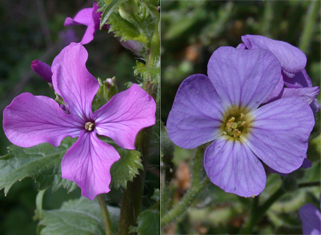 |
Pink or purple-flowered plants
Varying in size, from low and trailing to tall and upright, with pink, purple or bluish-purple flowers. Plants in this group may always have flowers this colour, or may also occur in white-flowered forms, with the two colours often growing together. |
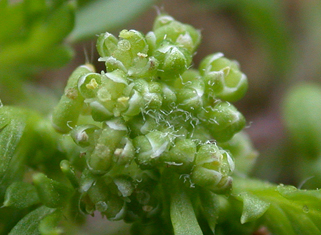 |
Swine-cresses
These are low, mat-forming species with deeply cut, compound leaves and tiny flowers. Some species have small, often unevenly-sized, white petals, while others have almost no petals at all and thus the flowers appear green. |
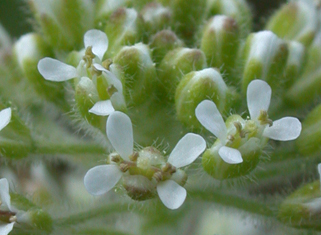 |
Pepperworts
A group of mostly upright plants, though they may vary in height from 15cm to over a metre. Flowers are usually small and carried in many-flowered heads. The heads may be flat-topped, or appear in an upright spike, which elongates as the flowers and seed capsules develop. Most species have short, rounded or spoon-shaped seed capsules. |
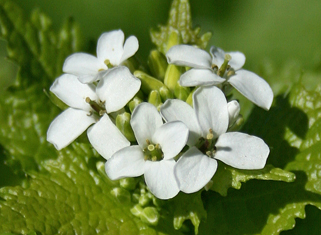 |
Tall, white brassicas
This group consists of plants with white, four-petalled, usually showy, flowers, carried on plants that are at least 50cm tall - At least knee high or above (species that are often around 50cm in height are covered on both tall and short, white brassicas). This is a very artifical group, so you will find much variation in the plants, with the height and flowers being the only common link. |
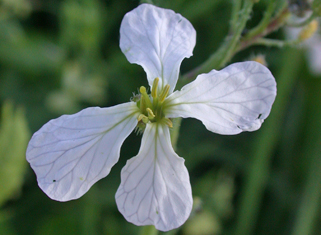 |
Tall, white brassicas
This group consists of plants with white, four-petalled, usually showy, flowers, carried on plants that are at least 50cm tall - At least knee high or above (species that are often around 50cm in height are covered on both tall and short, white brassicas). This is a very artifical group, so you will find much variation in the plants, with the height and flowers being the only common link. |
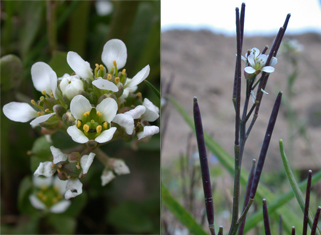 |
Short, white brassicas with long seed capsules
Small plants that are under 50cm tall, and often much less. All have rather small, white flowers with petals of more or less equal size, that are followed by slender, elongated seed capsules. If fruits are not present, you might also try the group with short seed capsules, but identification to species can be difficult without all the necessary features present. |
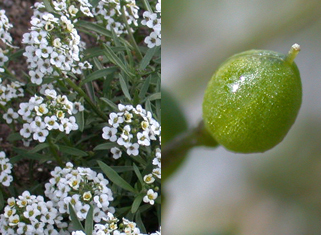 |
Short, white brassicas with round seed capsules
Small plants that are under 50cm tall, and often much less. All have rather small, white flowers with petals of more or less equal size, that are followed by short, rounded, either globular or flattened seed capsules. If fruits are not present, you might also try the group with long capsules, but identification to species can be difficult without all the necessary features present. |
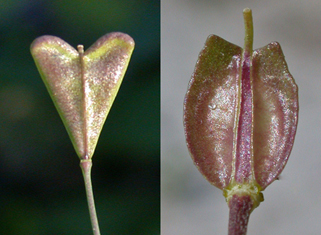 |
White brassicas with pronged seed capsules
Plants in this group have typical, white, four-petalled flowers, followed by seed capsules that do not fit into the groups above. The pods tend to be flattened and have one, two or three pointed segments or spikey tips; some are rather shovel-like, with upturned edges. If your plant has shovel-shaped or pronged seed capsules but flowers with rather small, often uneven-sized petals, you should check the swine-cresses from the link above. |
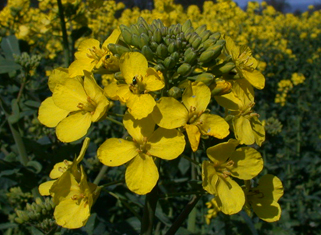 |
Tall, yellow brassicas
This group consists of plants with yellow, four-petalled, usually showy, flowers, carried on plants that are at least 70cm tall - well above knee height. This is a very artifical group, so you will find much variation in the plants, with the height and flowers being the only common link. |
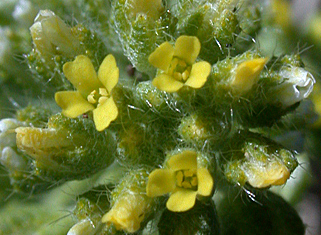 |
Short, yellow brassicas
This group consists of plants with yellow, four-petalled, showy or discreet flowers, carried on plants that are at less than 70cm tall - below knee height. This is a very artifical group, so you will find much variation in the plants, with the height and flowers being the only common link. Note that some of the taller, yellow-flowered brassicas are included here as they are sometimes found flowering before they have reached their full height. |